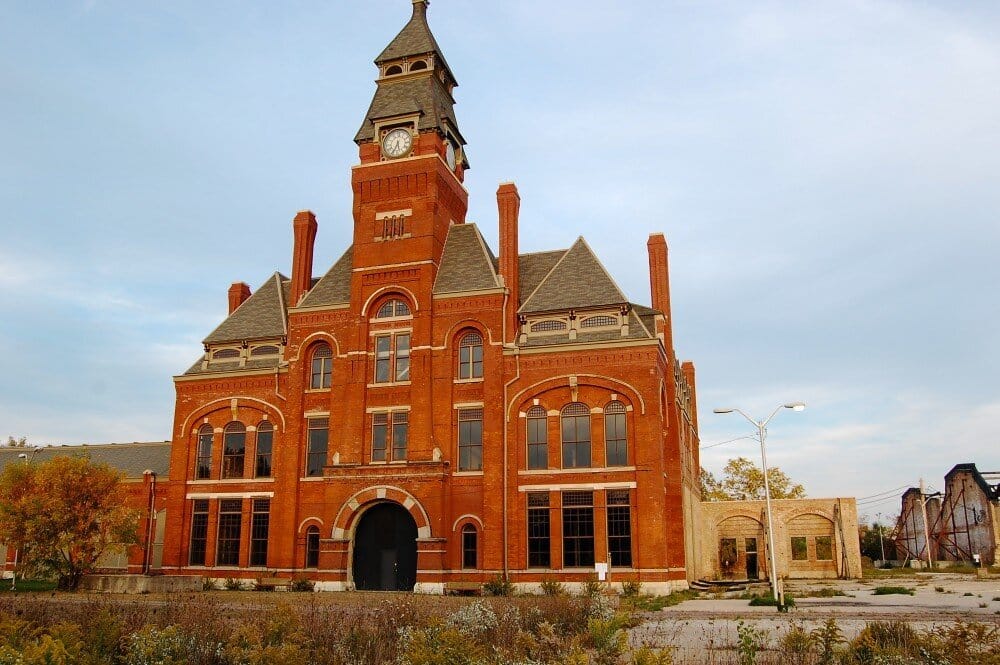

5 things to know about Pullman
Pullman is a unique South Side neighborhood that serves as a focal point for railroad, labor and Chicago history. Established in 1880 by Pullman Car Company founder George Pullman, it was among the first planned company towns in the U.S.
Pullman is a unique South Side neighborhood that serves as a focal point for railroad, labor and Chicago history. Established in 1880 by Pullman Car Company founder George Pullman, it was among the first planned company towns in the U.S.
By Josh Brickman, CAC docent
Pullman’s railway carriages, including the famous Pullman sleeping car, were built in a massive manufacturing facility located in the heart of the neighborhood. But after World War II, the exodus of city dwellers to the suburbs—combined with the nationwide consolidation of railroad companies—led to a decline in Pullman’s population and importance. Thankfully, the buildings where Pullman employees worked and lived have been preserved and added to the National Register of Historic Places. Here are five must-know facts about this remarkable Chicago neighborhood.
1. PULLMAN WAS A PIONEERING COMPANY TOWN
A planned instructional community—more commonly known as a “company town”—is a city entity where virtually all buildings (stores, residences, etc.) are owned by a singular company that also serves as the town’s main employer.
In the 1880s, the Pullman Car Company hired architect Solon Spencer Beman and landscape architect Nathan F. Barrett to lay the groundwork for its “company town,” which was among one of the first in the U.S. Solon designed more than 1,300 employee homes, as well as Hotel Florence, Greenstone Church and the company’s main manufacturing facility. Nathan planned the street system and designed Arcade Park.
2. PULLMAN ONCE BANNED ALCOHOL
Despite providing comfortable accommodations for his employees, George Pullman enforced strict “company first” policies. He prohibited independent newspapers and public forums for discussion; inspectors routinely barged into homes under the guise of “inspections”; and leases could be terminated on a whim.
George also did not want employees consuming alcohol, so he banned its sale within town limits. Yet at Hotel Florence, where George resided, there was a notable exception to the alcohol ban. Visiting railroad barons needed to indulge before and after conducting business, of course!
3. PULLMAN PROMPTED THE CREATION OF LABOR DAY
Although the town’s architecture and urban planning were lauded by visitors during the 1893 World’s Fair, the cleanliness and orderliness were not enough to offset growing ill will among residents toward the oppressive town policies. When an economic downturn struck in 1894, George cut wages, but refused to lower rents. Worker tensions boiled over into the Pullman Strike.
The violent affair resulted in the death of 30 workers, dozens of injuries and a U.S. military intervention. In the aftermath of the strike, President Grover Cleveland and Congress created Labor Day, to be celebrated annually on the first Monday in September.
4. PULLMAN PLAYED AN IMPORTANT ROLE FOR CIVIL RIGHTS
The vast majority of porters who worked on Pullman railway carriages were African Americans. These employees paid for food, lodging and uniforms out of their own wages, and relied significantly on the generosity of passengers, since tips heavily supplemented their income.
In an effort to organize and improving working conditions, The Brotherhood of Sleeping Car Porters (BSCP) was founded in 1925 by A. Philip Randolph in New York City. BSCP became the first African American union to receive a charter from the AFL (American Federation of Labor). But even more historically, in 1937, the BSCP became the first African American union to establish a labor agreement with an American company.
5. PULLMAN IS CHICAGO’S FIRST NATIONAL MONUMENT
Pullman was designed a National Monument in 2015, in recognition of the town’s contribution to labor history and its historic architecture that has been well-preserved for more than 100 years. The National Park Service is currently renovating the Pullman Clock Tower and Administration Building, planning to use the facility as its visitor’s center!